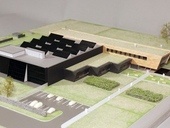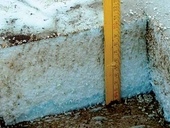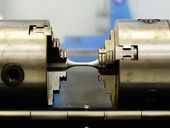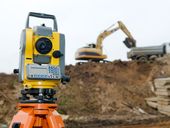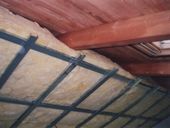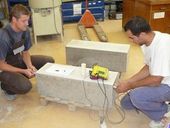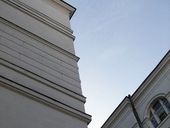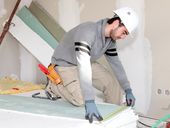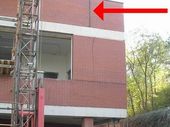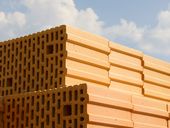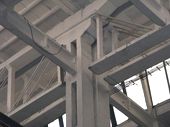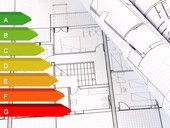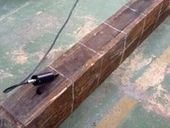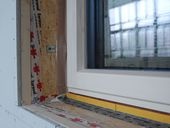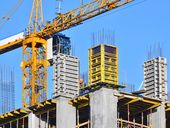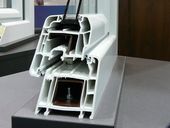The University Centre of Energy Efficient Buildings is a newly established interdisciplinary research institute of Czech Technical University focused to energy efficient buildings having the healthy indoor environment that, at the same time, are environmentally friendly. The main objective for the Centre establishment is the development of technologies for the energy demand reduction and the efficient improvement of natural sources concerning new constructions and reconstructions of existing buildings. The objective is to be achieved by the holistic approach, the expert knowledge concentration from the field of architecture, construction, mechanical engineering, information technologies, and hygiene of indoor environment and the top instrument equipment of the Centre.
Archiv článků od 25.3.2013 do 20.5.2013
The author determines this article to parties interested in business in the field of the technical infrastructure building management. He provides the fundamental information as concerns the provision of technical services at the real estate management in the area of the building technical facility in all buildings of the client of the services provider in the formof the facility management. The author deals above all with buildings serving exclusively for the administrative purposes within the range from large buildings in the possession to small workplaces in leased buildings.
Setting out and control of a vertical direction belong among often solved tasks in civil engineering. In order to setting out a plumb line the optical plumbing instruments are used. The most commonly used instrument for this activity is Zeiss PZL (Zeiss Zenitholt PZL 100). This contribution describes the procedure and results of testing according to STN ISO 17123-7: 2010 Optics and optical instruments – Field procedures for testing geodetic and surveying instruments. Part 7: Optical plumbing instruments.
In the second half of the last century the village changes in terms of demographics. First, the outhouses lose their importance, later, the living houses got empty. At best, the homesteads are used for weekend recreation. As a result of these changes, and due to improper construction impacts the houses dilapidate. There is material destruction and creation of static structural failure of the house.
The article deals with the questions of concrete homogeneity, above all with possibilities how to verify this characteristic. We manufactured for this experiment two concrete blocks with dimensions 300×300×900 mm from concrete C 20/25 and then we determined their homogeneity using non-destructive and destructive testing methods. It is only a small part of experimental research, but it is possible to generalize research results and conclusions. We verified the concrete homogeneity in real structure using the ultrasonic impulse method – on columns of monolithic frame of car shelter.
One of the reasons why building with almost zero energy consumption does not meet the expectation is that it may be too complicated. Another factor is that the project may be too optimistic, and other unforeseen factors, such as office equipment, which actually dominates the energy balance of the building.
The linear thermal expansion is thermal technical parameters that are important for the specific application of products site. The dilatometer was used on each given speciments of sizes 2 × 12 × thick, gradually increasing the temperature to 1000 °C and change in length was measured. From this was calculated coefficient α.
Assessors often encounter objects with uncertain structural system. These buildings are designed with difficulty and in its operation they may behave differently than expected. Good design and implementation are, in the case of long-term behaviour of structures, essential. The article deals with the basic principles of proper design and its assessment.
The basic document for the area of construction products was until the April 2011 Council Directive 89/106/EEC (CPD). On 4st. April 2011 was published in the OJ EU REGULATION OF THE EUROPEAN PARLIAMENT AND COUNCIL No 305/2011 which defines harmonized conditions for the placing of construction products to EU market and cancels Council Directive 89/106/EEC.
In connection with the implementation of the revised European Directive 2010/31/EU on the energy performance of buildings, certain legislative provisions such as Decree No. 148/2007, Coll. Replaced by Decree No. 78/2013, Coll. are currently amending. This article is focused on the changes associated with the energy certification of buildings, the "ENB", from the perspective of changes in the evaluation ENB.
This paper describes an investigation of historical timber members of roof structure at Masaryk railway station in Prague. In the paper is also presented an experiment, which deals with the influence of mechanical damage to timber members in the interpretation of the results of non-destructive measurement.
It has been one year and a half since Technical Standards Information TNI 74 6077 – The windows and external doors – Requirements for incorporation has been published. What is the consistency or inconsistency between the demands on windows and doors manufacturing, their installation and actually reached geometrical tolerances of building construction? What this state brings to manufacturers of windows and doors, what to building contractor and what to customers? The view through the eyes of quality control.
Information and access to technical standards plays very important role, when construction products are placed on the EU market. For the purpose of it can be very effective to use web of Czech office for standards, metrology and testing. Basic data for web are prepared by Institute for testing and certification. ČSN standard references placed in this web are connected with ÚNMZ web service „CSN on-line” and makes possible users of this service directly access to full texts.
This paper deals with the classification of test properties of windows and entrance doors in terms of usability for practical use. Those classification classes are very important for the use of acquired functional properties of hole filling for use of the products in the country. Based on the above, it is then possible to determine the specific levels of performance that should be achieved by a product to demonstrate suitability. In summary, attention is also focused on technical thermal and acoustic properties of hole filling in terms of usability for additional practice.
zpět na aktuální články
